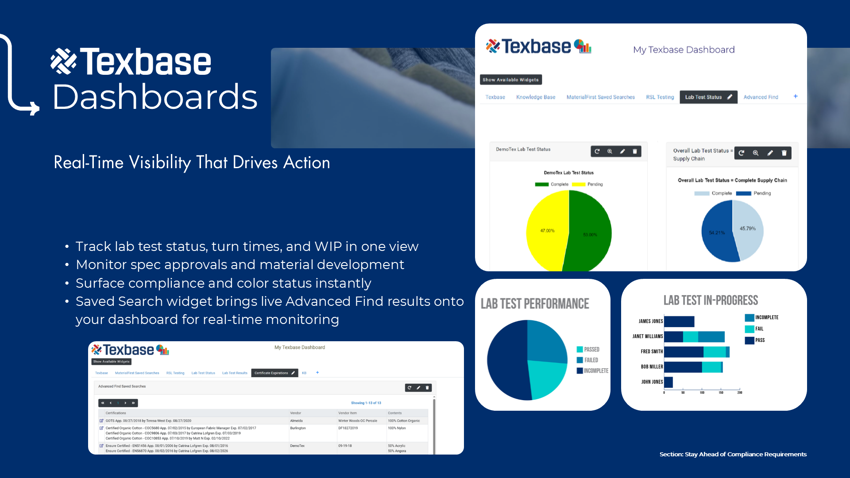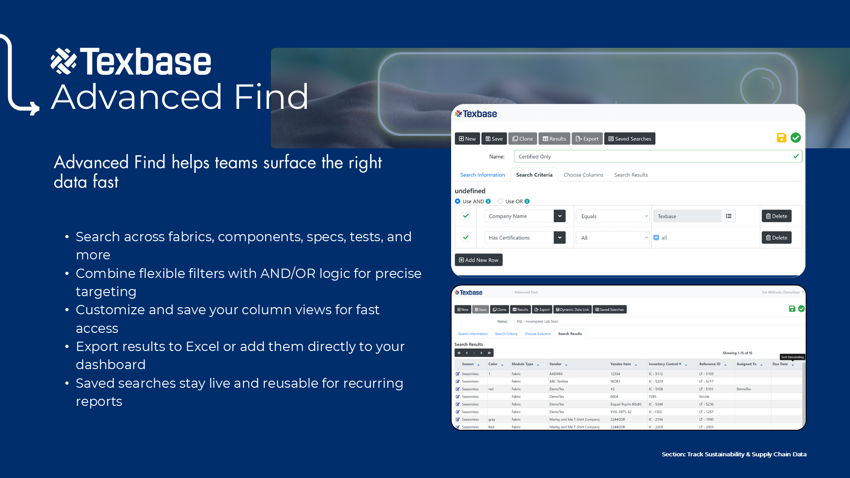Eliminating Data Gaps with Connected Supply Chains
Managing lab reports, supplier emails, and test data across too many systems? Watch how leading brands are fixing broken workflows and closing data gaps with connected supply chain tools.
In our recent webinar, we explored how to move beyond simply collecting data and start using it to drive results. Building a strong data foundation is essential for meeting compliance requirements, improving supply chain visibility, and preparing for evolving regulations like Digital Product Passports and CPSIA eFiling.
Key takeaways included:
Webinar Overview:
Thank you to everyone who joined the live webinar. Please see below for answers to some of the questions we received during the live session. Our aim is to guide you toward the appropriate resources so that you can find the answers you need.
* Please note, while we strive to provide accurate and useful information, please consult qualified legal experts to ensure that the actions you take are tailored to your specific legal and regulatory requirements.
Dashboards and reports are powerful tools for making data visible and actionable. By presenting clear visuals that track quality, compliance readiness, or supplier performance, teams can demonstrate measurable improvements. When leadership sees organized, audit-ready data reducing risk and saving time, it’s much easier to gain buy-in and expand usage across the organization.
Texbase can integrate with PLM or ERP to bring in style- or SKU-level attributes such as composition, certifications, and country of origin. Linking this data with material and testing records creates an overview that supports regulatory initiatives like Digital Product Passports and simplifies the process of generating compliance-ready product reports.
Advanced Find lets teams create highly targeted searches, apply filters, and save those queries for future use. Instead of exporting data repeatedly to spreadsheets, users can build and run consistent reports directly in Texbase, share them with colleagues, and even export them when needed. This reduces manual work and ensures everyone is working from the same source of truth.
Managing lab reports, supplier emails, and test data across too many systems? Watch how leading brands are fixing broken workflows and closing data gaps with connected supply chain tools.
Learn how brands are organizing internal data to simplify compliance, improve collaboration, and prepare for evolving sustainability and regulatory requirements.
AAFA and Texbase explore the role of data and digital supply chains in meeting today’s sustainability and compliance demands.